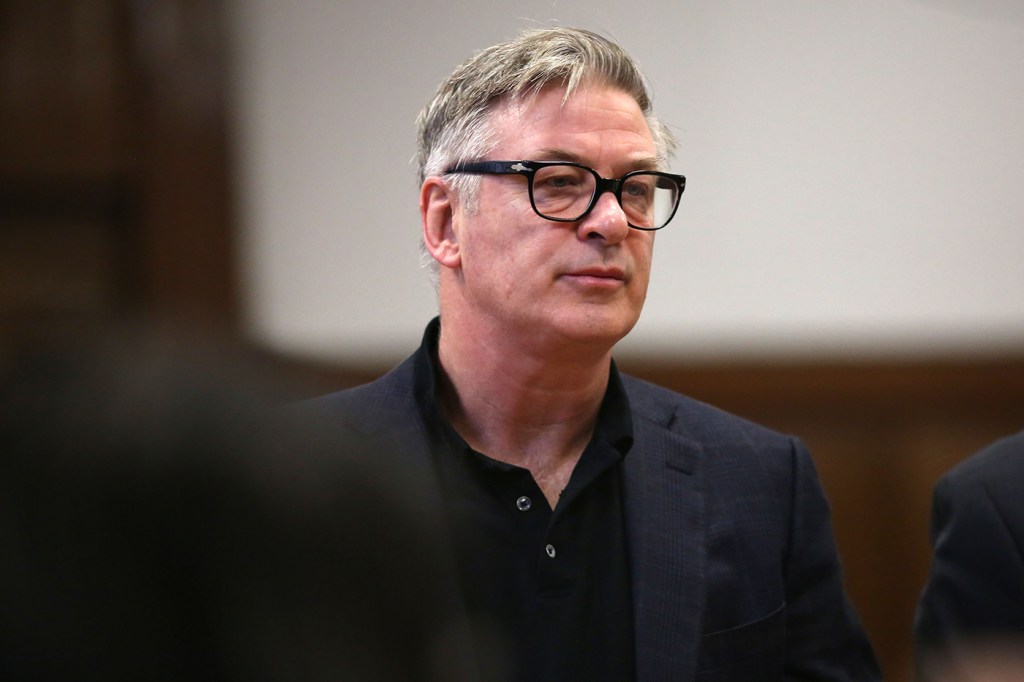Alec Baldwin charges ‘make no sense,’ says actor who also worked on set with guns in Santa Fe

Actor Alec Baldwin has been charged in connection with the shooting death of a cinematographer on the set of the film “Rust” in Santa Fe, New Mexico.
Baldwin and armorer Hannah Gutierrez-Reed are each facing two counts of involuntary manslaughter after a live gun handled by Baldwin was accidentally discharged on the set, killing 42-year-old Halyna Hutchins. Prosecutors in New Mexico, where the shooting took place, announced the charges on Thursday, reasoning that Baldwin should have checked the gun and the bullets, and that he should “never have pointed it at anyone,” according to the New York Times.
Hollywood film protocols state that live rounds are forbidden on movie sets. Does that mean it’s also the actors’ responsibility to check weapons used on sets?

Victor Talmadge, an actor, director and playwright for over 40 years, says that it’s never been an actor’s responsibility to ensure weapons used on a film or TV set are safe.
“If, while on set, we are given a thumbs-up from a gun expert to use these weapons, we use them,” he says. “Actors do not check them; those who do are outliers. It makes no sense that he should be indicted for this.”
Talmadge, who teaches acting and theater at Mills College at Northeastern in Oakland, California, was filming on the set of “The Sixth Gun,” a TV adaptation of a comic book series, in 2013 when he said he “held up and fired” several cold pistols during the course of the show’s production.
“The last set where I handled guns, I was in Santa Fe, New Mexico, incidentally,” Talmadge says.
He says he’s never been concerned for his safety or the safety of his colleagues while using the weapons.
“My experience is much like what Alec Baldwin has said: I have never been on a set where actors have been responsible for live ammunition,” Talmadge says. “That’s not in our purview; our purview is to accept the expertise of the gun handlers.”
Talmadge adds that “there has never been a situation where the Screen Actors Guild”—a union representing approximately 160,000 film and television actors, among other media trades—“has mandated firearms training for actors.”
“It just doesn’t exist,” he says.

“You should not point a gun at someone that you’re not willing to shoot,” Santa Fe County’s district attorney, Mary Carmack-Altwies, told the Times. “That goes to basic safety standards.”
Carmack-Altwies said Baldwin is being charged as actor and producer, which is where his duty to ensure the set was safe lies.
From a legal standpoint, the case against Baldwin would be hard sell to a jury.
“It will be hard to convince a jury that an actor in a film shouldn’t point a gun at anyone,” Northeastern law professor Michael Meltsner says. “And one might think the use of prosecutorial resources could be better spent elsewhere.”
Meltsner, author of the civil rights-era novel Mosaic: Who Paid for the Bullet?, added that he thinks it’s “a very poor decision” to charge the pair.
Baldwin has long maintained his innocence, saying he was just following instructions when the incident occurred. He also claims he pulled the gun’s hammer, but not its trigger.
“Someone put a live bullet in a gun, a bullet that wasn’t even supposed to be on the property,” Baldwin told ABC’s George Stephanopoulos in 2021. “Someone is responsible for what happened, and I can’t say who that is, but I know it’s not me.”
In a televised interview with CNN on Thursday, Carmack-Altwies said her office believes they have probable cause, stating that the state’s involuntary manslaughter statutes cover unintentional homicide.
She described a “lack of safety and safety standards” on the set of the film, saying there were live rounds mixed with dummy rounds—and that nobody was checking the weapons, or at least, “checking them consistently.”
“And then [the bullet] somehow got loaded into a gun, handed off to Alec Baldwin. He didn’t check it; he didn’t do any of the things he was supposed to do to make sure that he was safe, or that those around him were safe,” Carmack-Altwies said. “And then he pointed the gun at and pulled the trigger.”
Still, Meltsner says he has a hard time believing, based on the available evidence, that prosecutors will be successful.
“One assumes that they have convincing evidence that would persuade a jury, but the news coverage of the tragedy over the last few months hasn’t surfaced such evidence so far as I know,” Meltsner says. “And remember—proof must meet the reasonable doubt standard.”
Tanner Stening is a Northeastern Global News reporter. Email him at t.stening@northeastern.edu. Follow him on Twitter @tstening90.





